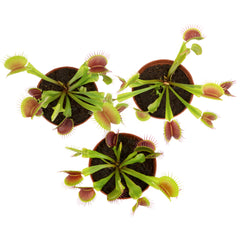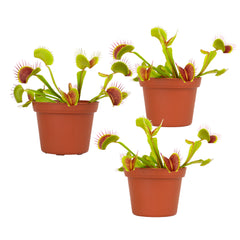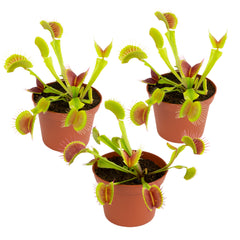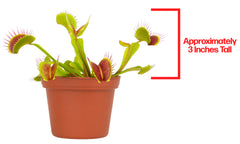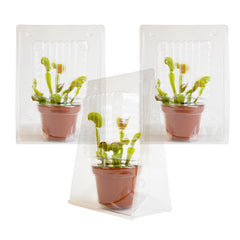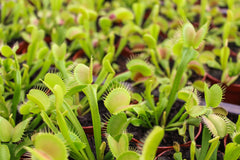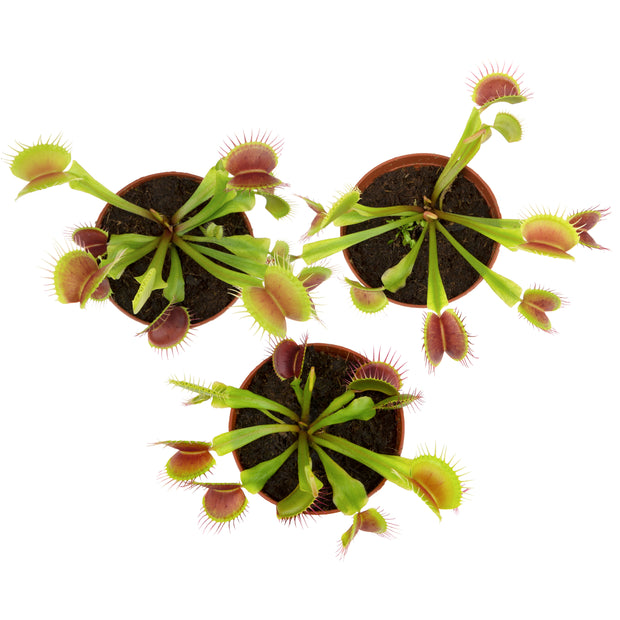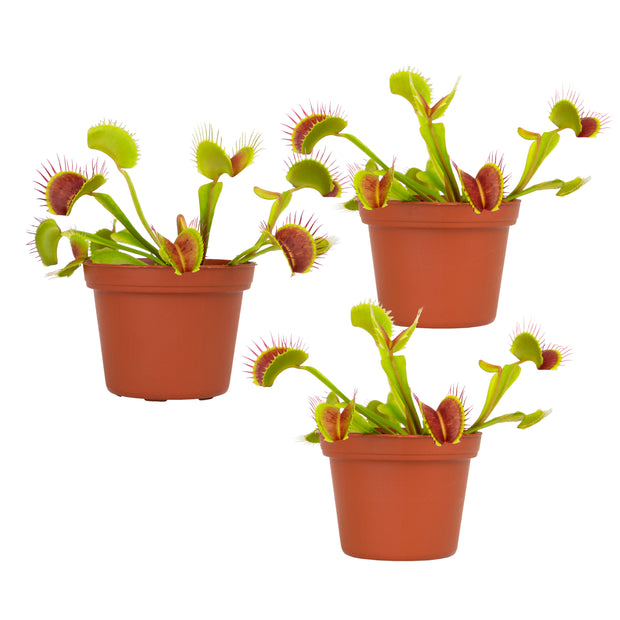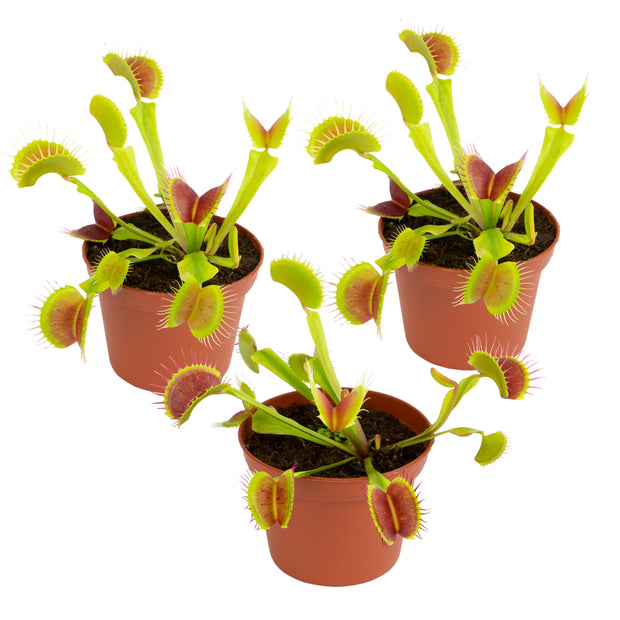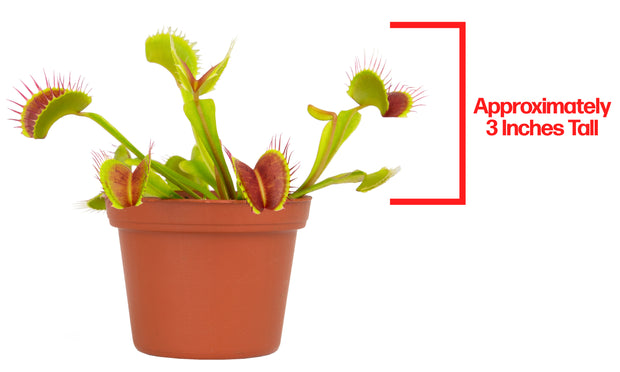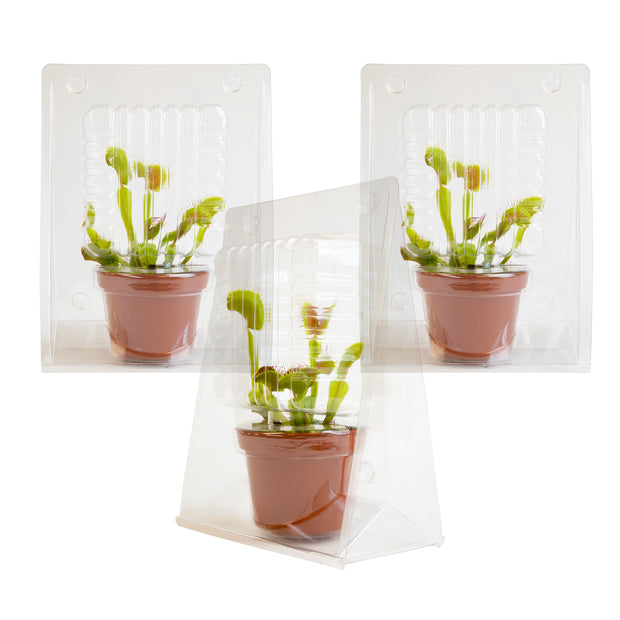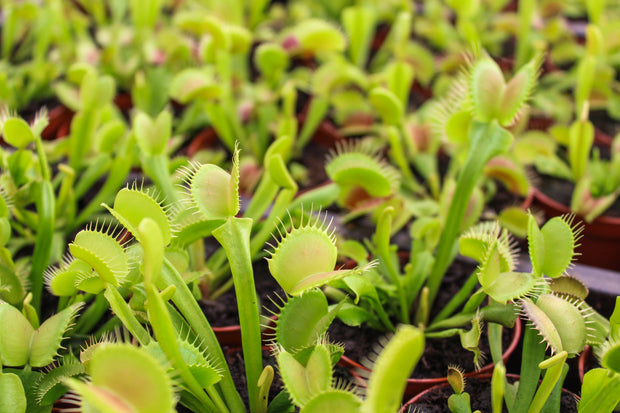Description
Venus flytraps invite discovery and discussion and add living intrigue to your home décor. These carnivorous bog dwellers make for fun, unique and stimulating plants for plant parents and collectors of all ages. Plenty of the curiosity surrounding Venus flytraps (Dionaea muscipula) involves their diet. To that end, they don't just rapidly snap shut their traps (leaf blades) for anything. The plants expend such energy only when potential prey has touched at least 2 trigger hairs in succession on the inside of a trap within 20 seconds-a "feat" accomplished, presumably, by a meaty, worth-the-effort insect. Once captured, the struggling prey touches more hairs, triggering more signals. Enzymatic juices do the rest, over the course of a week or so. Our Venus flytraps need prey around 4-times a year. Other than the bug-eating thing, Venus flytraps are rather like other plants, depending on light and water to survive. Native to nutrient-poor, wet, acidic soils in the Carolinas, the plants get from their prey minerals they don't from the soil. Provide full to part sun outside and bright light indoors. Use rain, distilled or purified water. Place the pots in bowls and keep 1/4 in. to 1/2 in. of water in the bowls. During the winter dormancy period, allow the soil to become barely moist until new growth begins.
- Fascinating plant captures imagination of kids, collectors and plant lovers
- Grow to 5 in. or more in diameter
- Makes a rewarding, novel gift
- Adapts well to the home environment
- Your 3 Venus flytraps may not be of identical size






